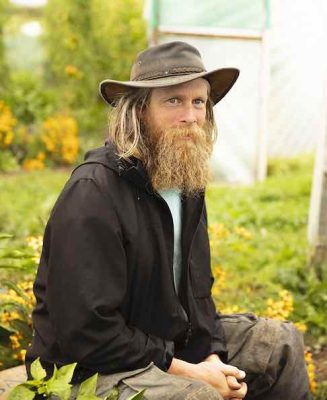
Plotgate Farm in Somerset UK is becoming a remarkable success story for its pioneering, community agro-ecological style of farming.
It was designed from the get-go to be truly sustainable, Plotgate has recently come top in an assessment using United Nations approved criteria.
Founded in 2015 with 23 acres, they have just closed a deal to buy the neigboring 16 acres of land and already raised £175,000 to pay for it. The farm, run by Dan Britton and Amy Willoughby raised most of the money over the past few weeks from locals who already subscribe to their weekly food boxes (plotgatecommunityfarm.org/2-box-trial. Plotgate is paying a return of the CPI – meaning whatever inflation is at the moment they pay the same in interest on the loan, currently 9.5%. They only need another £15,000 to complete their targets, although there may be more funding rounds soon to pay for their most ambitious idea yet.
The land Plotgate just acquired is waterlogged. It sits within the Somerset levels, famously prone to flooding, especially in winter. The levels contain a network of sluices, dams and ditches which has for centuries managed the water in the area to allow agriculture to take place.
“We are planning to return to a forgotten method of farming,” said Dan Britton, a naval architecture graduate who has masterminded Plotgate’s technical development. Their new fields already contain the remains of the array of shallow dugout water courses at regular intervals that allow the higher earth between them to remain dry and fertile – 13 strips in the 8 acre field, each approx 10mx180m.
“Its anybody’s guess, but I think we will see a doubling in yields per acre from the new land – “that means twice the food for the same amount of work,” said Dan who nw sells 100 veg boxes per week for £13 each. Anyone interested in investing can contact via the Plotgate web site or direct to Dan.
Far more important to Dan than the potential profitability is the water remediation – “We are going to clean up the waters of Avalon,” he said.…

ALL over the world, governments are handing farmers green subsidies in the form of carbon credits for certain types of planting and land management that sequester or reduce carbon consumption. But small growers, including off-gridders and allotment owners, are excluded from this cosy arrangement. The grants total tens of billions each year according to McKinsey, a consulting firm.
If you are a smallholder who wants to apply for your carbon credits, get in touch with us at off-grid.net, or leave a comment at the end of this story. We will collate all claims and submit them when there are enough to qualify.
In Britain, for example, farmers have two options – go green or go under. The calculation is simple – A farmer plants a wood, grows bigger hedgerows or tends the soil in a certain way, that sucks a certain number of tonnes of carbon dioxide out of the atmosphere.
This is verified and the farm is then granted a certificate for how much CO2 it has absorbed, which can be sold to a business that needs to reduce its own carbon footprint.
The UK is not alone in this field, with similar initiatives under way in the US, the EU, Australia and New Zealand.
In eastern Australia, a vast area called the “mulga belt” is now home to a booming carbon trading industry that has netted 150 businesses at least $300m in less than a decade, according to official figures reported by the Washington Post.
Businesses should be looking to reduce their own emissions first, say experts, but carbon credits could help with any residual emissions, the ones that are difficult or impossible to remove.
Farms and landowners are well placed to help with this, as many actions they can take to improve their own operations will also cut carbon emissions.
Farmers can apply for carbon credits if they plant their fields with environmentally-approved crops. Small growers cannot. The amount seems small, only a £100 per Hectare in the UK and £168 for woodland, but to someone with a two Hectare smallholding who survives perfectly well on £10,000 a year, its a 2% pay rise, for doing what they were going to do anyway.
At the moment, UK farmers cannot participate in the British emissions trading scheme, although this may change soon with the Government having recently consulted on proposals to bring them in. But there is nothing to stop us all, every landowner, garden owner and allotment owner who wants to log-in to any online application form set up for farmers.
In the meantime, farms and others can participate in voluntary carbon trading markets. The two most established are the Woodland Carbon Code and the Peatland Code, both of which are recorded on the UK Land Carbon Registry.
The woodland code rewards landowners for planting trees, typically over a typical period of 30 to 40 years. It …

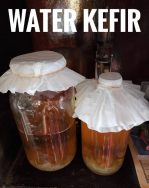 I appreciate today’s short attention span theater, I have a lot to say about kefir. If you want the short version, scroll down, you’ll see it. ?
I appreciate today’s short attention span theater, I have a lot to say about kefir. If you want the short version, scroll down, you’ll see it. ?
We have known for many generations about the health benefits of consuming probiotics. Fortunately there are many ways to get those good bacteria into our body. Our ancestors used to make their own probiotic rich foods. Things like yogurt, sauerkraut, kimchi (one of my favorites!), miso (another favorite), pickled foods (salt brined as apposed to vinegar preserved), sourdough starters, the list goes on and on. These were often used as a way to preserve foods before refrigeration was common. Foods would only last so long in their fresh state, we needed to introduce friendly bacteria that would prevent any unfriendly (to us) bacteria from colonizing the food. A beneficial side effect of these friendly bacteria, besides preserving the food, is they are often very good for our gut microbiome.
 This is something I absolutely believe we need to get back to doing, being more self sufficient, being able to grow and preserve our own food, being able to propagate our own health products/produce, not only for our own personal use, but something that can be shared with family, friends, neighbors… as well as a potential source of income, trade or barter.…
This is something I absolutely believe we need to get back to doing, being more self sufficient, being able to grow and preserve our own food, being able to propagate our own health products/produce, not only for our own personal use, but something that can be shared with family, friends, neighbors… as well as a potential source of income, trade or barter.…
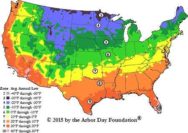

Growing your own food, and enough of it to last a while, is one of the pillars of living off the grid. Knowing about your Growing Zone is the key, allowing gardening off-grid to morp from a hobby to something vital to survival. And while there are other ways to put food on the table, gardening provides a balanced diet for the off-grid family as well as exercise and community.
A huge part of living off-grid involves understanding the area in which you are situated. Knowing your surroundings, including the success of past harvests, is essential to creating a garden that will sustain your lifestyle. Here are some tips for understanding your growing zone for a bountiful garden.
Know Your Spot on The Map
To understand your climate and growing zone, you need to know where your land falls on the USDA Plant Hardiness Zone Map. This useful tool assigns a number to each growing zone within the country. This number corresponds to how well different plants will grow in your area. For example, North Florida is in zone 8, which is great for growing apples. But you’ll have a tough time trying to grow grapes or cherries. Keep in mind that each growing region includes two subcategories as well. It’s possible that a plant that thrives in your growing zone won’t survive because of individual circumstances. However, staying with those plants rated for your growing zone number should help bring forth a bountiful harvest.
Know Your Soil
Another thing to consider when growing a substantial garden is the soil. You may have a wide range of plants in your growing zone, but not everything will do well in the ground on your property. Specific plants prefer a certain kind of soil that your land may not provide. You can add organic material to help fix soil conditions, but that doesn’t guarantee success.
Know Your Season
Northern homesteads will see cooler spring and fall seasons while southern ones will see plenty of hot weather. Different produce grows better in different seasons. It’s best to start out with cool-season vegetables like lettuce, peas, and broccoli well before hot weather arrives. If you’re living in the south, you may have no choice but to start with a warm weather crop like melons, zucchini, and cucumbers. Knowing your area and the average temperature for each season is vital to successfully sow seeds at the right time.
Know Past Weather Patterns
Taking note of past weather conditions within a season will help you understand and work your land better. Prolonged winter temperatures or a freak spring snowstorm can significantly decrease the amount of food that you can produce. Gardeners in Colorado know to wait until after Mother’s Day to plant. Yet the picture above was taken in late May, two weeks after the last forecast frost. …
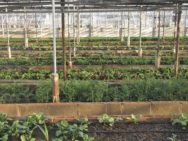

Food comes after water in the hierarchy of the things you need to sustain life off-grid.
First Water, then Food, then Fire, then Shelter, although you could argue Shelter and Fire should be the other way around.
Food and water the source of our nourishment, and you simply cannot live without them.
Off-the-grid living puts a heavy emphasis on self-sustenance, self-doctoring and running your own power supply. This means that you’re going to have to give up many conveniences that modern society offers.
You will be living away from the convenience of supermarkets that provide most commodities in one huge place. Gone will be the ease (as well as the stress) of living in the city.
Water is usually rather easy to secure, although we have made a video on our YouTube channel about what happened when we went searching for free water in the city.
This article is focused on food. There is also a video about finding free food in the city.
But how do we secure food when living off the grid?
Fishing
If you’re able to find a clean natural water source, there’s a chance that you might also have found a source of food. Of all off-the-grid food available, fish is the most beneficial. It contains your daily requirement of Cod Liver Oil which is more essential to survival than one might think.
The advantage of fishing is that as any fish you catch, you can cook and consume immediately, as opposed to fish farmed supermarket fish, filled with its own faeces and five days from factory to plate.
Farming
The most common method of securing food comes in the form of farming. And it is rightly so, because this is where you’re going to get your staple food from. This is essential to your survival because crops like your vegetables, fruits, and grains will help get you through the winter, where animals and fish may be rare.
You may even decide to raise livestock to further boost your ability to nourish yourself and your family, as is the case in subsistence farming. Though it’s important to note that the purpose of subsistence farming is to allow you to provide exclusively for yourself (or the off-the-grid community) and thus, the farm and the crops produced from it have no commercial value.
Hunting
For the average outdoorsman, hunting is a favorite way to pass time. It is a hobby to most people. But for those who opt to live off the grid, it is a way of life and a means for survival.
It is an essential supplement to both farming and fishing, especially when you need to get through the winter. Pelts and fur are also very valuable during the bitter cold…


One of the things that some of my neighbors have done when moving out to the country is get chickens, some do it for the meat, but most do it to harvest eggs. One problem is getting too many chickens for the number of people living (and eating) in the household. It’s near impossible to buy just a few chicks or fertile eggs from a catalog, they often insist that you buy a dozen or more, usually more, that’s because of the mortality of live chicks being shipped out. Some of the chicks will die, either in the shipping process, or shortly after arriving. And it’s cheaper (per chick) to ship more than fewer. Some of the wiser neighbors will go in with another family or neighbor and split the chicks, but many will go ahead and order way too many chicks and will end up with far too many eggs at one time once the hens start laying.
Personally I would say that for one or two people, no more than 4-6 laying hens, if you think about it, each hen will lay one egg per day, unless you eat a lot of eggs, or are selling the eggs, then it doens’t take long to be overrun with eggs.
There are, however, ways to store the excess eggs where they will not go bad. And anyone who has been around laying hens know that they slow down egg production in the winter, so it’s a good idea to be able to save that excess of eggs for the winter when you will be getting fewer to none.
Before refrigeration was available, people would use hydrated lime to store the eggs, it keeps them from going rancid and if done properly, it’s said that you can keep eggs fresh for up to a year, possibly longer if kept in a cool place.
The best time to start this is in the spring going into summer, only use clean but unwashed fresh eggs, do not try this with store bought eggs as they have been washed and no longer have their protective “bloom” on them, the pores will be open and the eggs will suck in the hydrated lime making the eggs inedible.
Watch these two videos to see just how simple this process is.
…
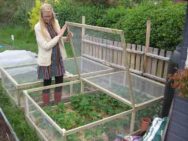
Are strawberries your favorite fruit?
Want to grow them yourself at home?
Here’s 5 tips on how to grow more strawberries than expected! Practice makes perfect so don’t worry if its your first time gardening.
runners begin to dry up and shrivel away. After removing the runners, the plant can absorb more nutrients, which leads to producing more than expected. It’s quite simple to plant strawberry runners. All you have to do is dig around the plant and gently pull it up!
And there you have it. A bunch of berries! All you have to do now is pick them and enjoy the fresh juicy taste of the red luscious berry. Permaculture experts say that growing asparagus next to your strawberries gives better results.
…

It’s great to rear chickens – eggs, scratchy kind of companionship, and eventually a roast bird.
But should every off-grid home have a few? They need work and they can get ill. If they would just stay healthy chickens, they could be a great source of both food and income. If you decide to own some chickens, here are some tips and tricks to keep them healthy and happy.
FACT OF THE DAY: Raw pumpkin seeds are natural de-wormer for chickens!
And at this time of the year there are a lot of free pumpkins to be had.
It seems a lot of people put their faith in this tasty treatment. According to Sunny Simple Life , pumpkin seeds are coated in a naturally occurring chemical that paralyzes the worms so the chicken can expel them.
But where do you get your pumpkin seeds?
What To Not Give Your Flock.
Just like any other animal, giving treats to your chicken is a classic way to earn their trust and get them to bond with you! Most of your left-over food will be safe for your flock but try to avoid salty. You should also keep them away from moldy food for it is toxic. Citrus is another food that should not be given to chickens due to the acidity. You don’t want to make your chickens upset!
If you’re having trouble finding pumpkin seeds for your flock, here’s another article that shows you an alternative for chicken feeding – Karl Hammer, the king of compost, explains how he feeds his extremely large flock with tall mounds of fertilizer. Compost can do the job just as equally as raw pumpkin seeds. Yes that’s right, compost.
Never buy grain for your chickens again!
Happy Feeding!…
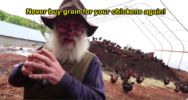

When I picture raising chickens, it’s always free range (of course!), I see a farmer walking through a flock of hungry chooks tossing handfuls of grain onto the ground for feed. It seems that Karl Hammer has figured out how to raise chickens, over 600, without having to purchase even one bag of grain. Watching this video, it’s amazing to see all of these chickens roaming free, scrambling over and digging up tall mounds of compost. Karl is a compost king, he has various (and huge) compost piles set in strategic places to funnel and capture the leachate that drains through and from each pile into the next. This is designed so that none of the nutrients are lost and they don’t end up polluting their potable water source nor the neighboring properties.
These compost piles consist of many different sources of material, from cow and donkey manures, waste food from various restaurants from town and the other things you would find in a compost pile. They are HOT, meaning they are active, in fact, Karl is producing his first batch of black garlic in one of the heated piles. I had never heard of black garlic, but it’s something I am very interested in now, you can learn more about it here.
I started watching this video thinking I was only going to learn about chickens and compost, but Karl has much more up his sleeve than that. He raises and uses American Mammoth Donkeys (Jackstock), seems they were very important in history, in the USA and in other countries, one of his jacks ancestry goes back to an animal that was given to President Washington by the King of Spain, another gift came from the Isle of Malta. (LINK) These animals not only provide valuable manure, they are working animals, pulling equipment and being guards for the other livestock on the farm.

Watch and enjoy the video, I certainly did.
https://youtu.be/IWChH9MHkHg
…

Norwegians love to unplug once in a while — disappear from civilisation into their remote cabins. Being in contact with the nature is one of the most valued factors for people with cabins. They enjoy the cumbersome, rural life without any power, water or toilets. Or so they claim. In the last years cabins have gotten bigger and with more facilities, and it is starting to affect the environment and the wildlife in the Norwegian forest.
Cabins a disturbing factor
According to the Institute of Natural Research (NINA) report on “Conflicts and Sustainability around Second Home Development”, the mountain huts can give an unnatural high access to food to small game such as red foxes. This gives red foxes access to bigger areas which threatens different species, like the arctic fox.
Much of the cabin construction takes place in areas that are particularly important for wildlife such as migratory roads, winter habitats or calving areas. These are areas where the animals are particularly vulnerable, according to forskning.no.
The research shows that development interferes more than previously thought. For example reindeers are located kilometers away from their permanent infrastructure. This means that large mountain areas in practice are not available as habitats anymore. When removing cabins and trails, the reindeer seems to quickly reuse the areas, says Senior Researcher Bjørn Kaltenbor who conducted the interdisciplinary project.
Not enough focus on environmental awareness
The degree of environmental awareness people have for their cabin life is not particularly high. On the other hand, the attitudes towards new developers are overall negative.
Kalterborn told forskning.no: ”The vast majority of cottage owners are negative towards major future changes in the cottage areas, such as infrastructure development and depreciation”.
Cabins are today one of the largest economic sectors in the rural municipalities in Norway. In many of the municipalities, construction is considered a rescue plan in relation to failing agriculture and relocation. Unfortunately, according to Kalterborn´s research, the majority of the municipalities in the Southern Norway region have insufficient capacity and lack of competence and overview to keep up with developments in the sector.
“This can create major conflicts for the government in the future if they have to return lost habitat for important species such as wild boar”, Kalternborn warns.
Want to capture wild animals on camera? See: Trail Cameras for hunters or animal lovers.…

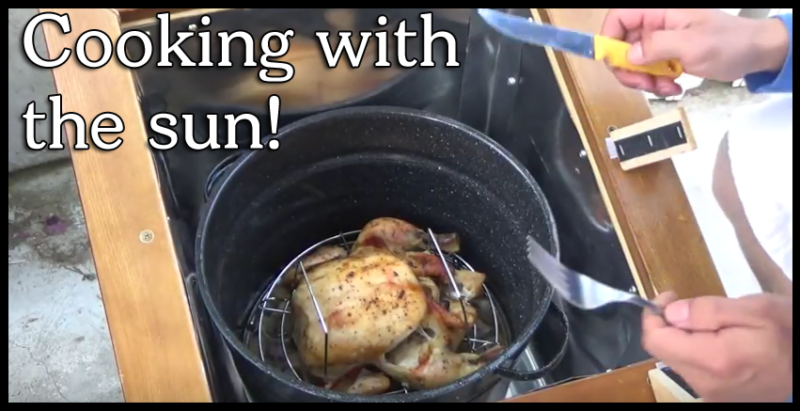
There are several different ways to use the sun in cooking, aka solar cooking or solar ovens. If you live in a sunny place, the desert, anyplace with unobstructed sunshine, you can use a solar oven to cook most meals.
There are parabolic cookers, these are like using a hot grill, you pretty much have to be right on top of it all the time to cook with these.
There are panel cookers, these use a silver (usually mylar) foil covered cardboard, the DIY ones are often made from a window shade made for vehicles. The nice thing about these are they are very portable, light and easy to set up. The bad thing about them is they don’t reach and maintain a very high temperature, and being light weight, they can blow away in wind.
The third major kind are box cookers, these work just like a small oven, they can be made of a cardboard box, or for a more permanent solution, made of wood or plastic. It is essentially an insulated box with a glass top and to make them work even better, reflectors are added to the top. This is the kind I like best.
I have scoured YouTube in search of the best build, I see many mistakes being made, mainly in the materials used in building them, you don’t want to use anything that will off gas or become toxic when it becomes hot, using styrofoam, some types of glue, some kinds of wood even will out gas toxic fumes when heated, I cringe when I see these being used.
I found one video that really jumped out at me, though I’m sure there are many more, I liked this one. The first video shows how it’s built, I will admit that my ADD struck and I had to move the video along a bit, but the build is solid. The second video shows a whole chicken being cooked in this solar oven. Enjoy!
https://youtu.be/yPRkwnpv-C8
…